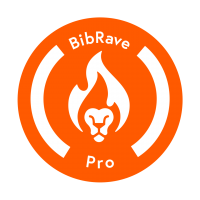How to Run When Sore: A Runner’s Guide to Managing Muscle Pain
Posted on May 06, 2025 under running | No CommentEver woken up the day after a run feeling like your legs got into a fight with a weightlifting rack? That achy, can’t-walk-down-stairs feeling is something every runner knows intimately. But here’s the plot twist: sometimes running through that soreness isn’t just okay – it might actually help you recover faster.
As someone who’s logged thousands of miles (and countless sore mornings), I’ve learned that not all muscle pain is created equal. Understanding when to lace up despite the aches and when to give your body a break can be the difference between becoming a stronger runner and ending up sidelined with an injury.
Understanding DOMS: What It Is and Why It Happens
You know that achy feeling that hits a day or two after a tough run? That’s Delayed Onset Muscle Soreness – DOMS – and it’s totally normal for runners. Unlike the burning you feel during a run, DOMS shows up 12-48 hours later and usually peaks around the 24-72 hour mark.
Here’s what’s actually happening: When you run, especially if you’re new to it or trying something more intense than usual, your muscles get tiny tears. I know, it sounds scary, but it’s actually how your body gets stronger! These micro-tears are your muscles’ way of saying, “Hey, we’re adapting to this running thing!”
If you’re just starting out with running, you’ll probably notice more soreness at first. That’s because your muscles aren’t used to the workout yet. But don’t worry – your body’s pretty smart. As you keep at it, those same workouts won’t leave you feeling quite as sore. It’s all part of becoming a stronger runner.
Think of DOMS as your body’s way of giving you feedback. It’s not trying to stop you – it’s just listening to your body!
Knowing When It’s OK to Run (And When It’s Not)
Let’s talk about the difference between normal running soreness and something more serious. If you’re feeling general muscle stiffness or mild achiness that affects your whole leg or running muscles, that’s usually just DOMS doing its thing.
But watch out for sharp, stabbing pains in one specific spot – that’s not normal soreness. If you’ve got pain that hangs around even after a few days of rest or keeps getting worse, it’s time to pump the brakes on running.
Here’s my rule of thumb: If your soreness is above a 3 out of 10 on the pain scale, or if it’s messing with your daily activities (like walking up stairs or getting out of bed), take a break. And if you’re asking yourself, “should you continue running?” – the answer depends on the type of pain. Dull, overall muscle soreness? You’re probably good to go. Sharp pain or swelling? That’s your body waving a red flag – time to rest and maybe chat with a doctor.
Smart Tips for Running Through Soreness
If you’re dealing with mild muscle soreness, you can usually keep running – just be smart about it. When my legs feel a bit heavy from yesterday’s miles, I stick to these simple rules:
First off, make sure it’s just regular muscle aches and injuries. If you can walk normally and don’t have any sharp pains or swelling, you’re probably good to go. But if you’re hobbling around or wincing with each step, take a rest day (or two).
For those moderately sore days, try cutting your usual distance in half. I like to call these my “shake-out runs” – they’re short, easy-paced, and actually help work out some of that stiffness. Skip the speed work or hill training when you’re sore – your body needs recovery techniques for athletes, not another hard workout.
Listen to your legs during the run. If the soreness gets worse or turns into actual pain, wrap it up early. Remember, there’s no shame in taking an extra recovery day if your body’s asking for it. Better to miss one run than risk being sidelined for weeks!
Recovery Tips That Actually Work
Want to bounce back faster from those sore running days? I’ve learned a few tricks that make a big difference. First up, don’t skip your warm-up and cool-down – they’re not optional extras! A good 10-minute warm-up gets your muscles ready for action, while a proper cool-down helps prevent that next-day stiffness.
Here’s what works for me: After a run, I drink plenty of water and grab a protein-rich snack within 30 minutes. Your muscles need fuel to repair themselves, and staying hydrated helps speed up recovery.
I’m also a huge fan of “recovery for athletes” – like going for a super easy jog or using a foam roller (ouch, but worth it!). These activities get blood flowing to your sore spots without putting extra stress on them.
The biggest game-changer? Sleep! I used to think I could skimp on rest, but getting 7-8 hours makes such a difference in how quickly I bounce back. If you’re feeling extra beat up, there’s nothing wrong with taking an extra rest day. Sometimes doing less helps you do more in the long run!
Listening to Your Body
Running with sore muscles is all about paying attention to what your body’s telling you. When I head out for a run, I keep track of how my muscles feel – both during and after. That dull ache in your quads? Probably fine to run through. But if you notice sharp pains or swelling, it’s time to stop.
I keep a simple running journal where I write down how my legs feel each day, my run details, and recovery methods that work best. This helps me spot patterns, like when I might be doing too much too soon.
For new runners, especially, it’s key to know the difference between sports injury symptoms and potential injury signs. If you can walk normally and your soreness doesn’t get worse during your run, you’re likely good to keep going. But if you’re limping or your pain increases while running, take a break.
Remember: your fitness level today might be different from where you were last month or where you want to be next month. Some days you’ll feel ready to tackle miles, while others might call for rest. That’s totally normal – and smart running!
When to See a Doctor About Running Pain
Sometimes it’s hard to tell if you should keep running through soreness or get checked out. Here’s my rule: if the pain sticks around for more than a few days, makes your joints puffy, or stops you from moving normally, it’s doctor time.
I learned this the hard way when I ignored a “minor” knee twinge that turned into weeks of sitting on the sidelines. A good sports doc or physical therapist can distinguish sports injury symptoms from normal running aches. They’ll help you figure out if you’re just dealing with regular muscle soreness or if something else is going on.
Not sure if you’re too sore to run? Here’s what I watch for: pain that gets worse during my run (not better), soreness that doesn’t go away with rest, or any “hot spots” that feel different from regular muscle fatigue. If moving around feels like a real struggle or your running form changes to avoid pain, that’s your body saying, “Time to get this checked out!”
Remember – getting help early often means less time off from running in the long run.
Do’s and Don’ts of Running When Sore
When your muscles are feeling achy from yesterday’s run, I follow some simple rules to stay safe and keep moving. Here’s what works – and what doesn’t:
Do:
- Start with a 10-minute easy walk or light jog to wake up those tired muscles. I like to add some gentle leg swings and walking lunges too.
- Keep a water bottle handy – I sip before, during, and after my runs to help my muscles recover.
- If my legs are just a bit heavy, I’ll do a short, easy-paced run. These “recovery runs” actually help work out the kinks.
- Pay attention to how my body feels throughout the run, adjusting my pace and distance as needed.
Don’t:
- Run through stabbing pains or specific spots that hurt – that’s asking for trouble.
- Try to nail a tempo run or speed workout when your muscles are screaming.
- Skip rest days when walking down stairs feels like torture.
- Keep running if the soreness gets worse during your run. I learned this one the hard way – better to cut a run short than risk injury.
Remember, it’s okay to take an extra recovery day if your body needs it!
The Bottom Line on Running Through Soreness
Running when sore doesn’t have to be a guessing game. By tuning into your body’s signals and understanding the difference between normal muscle fatigue and potential injury, you can make smart decisions about when to push through and when to rest. Remember, becoming a stronger runner isn’t just about logging miles – it’s about learning to work with your body, not against it.
Every runner’s journey is unique, and what works for one person might not work for another. Trust your instincts, stay patient with your progress, and don’t be afraid to adjust your training based on how your body responds. After all, the best runners aren’t just the ones who train hard – they’re the ones who train smart.







